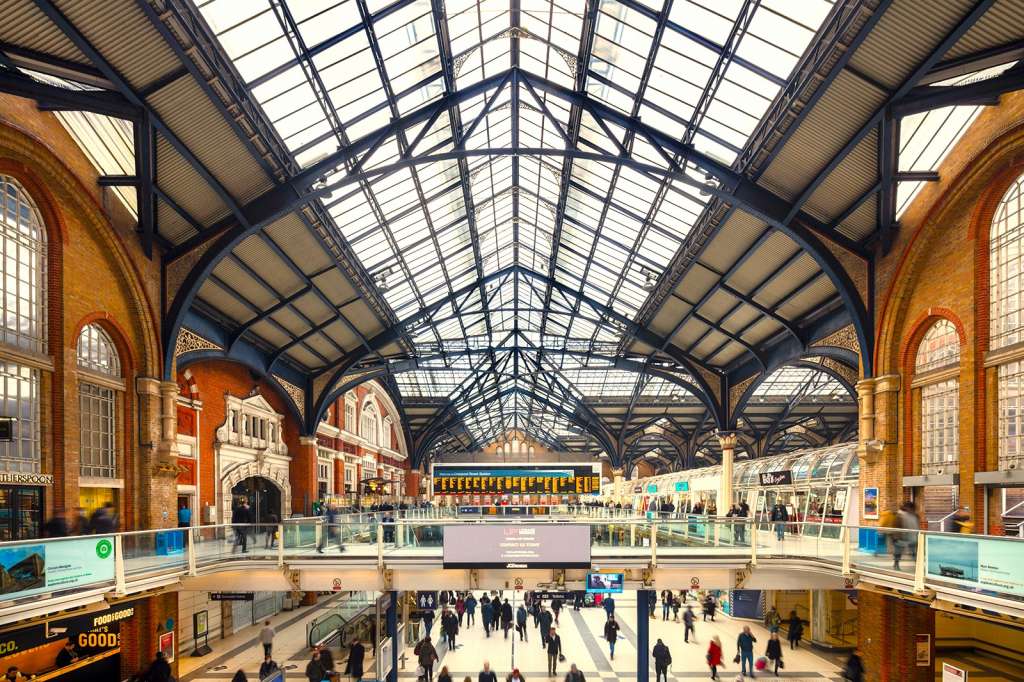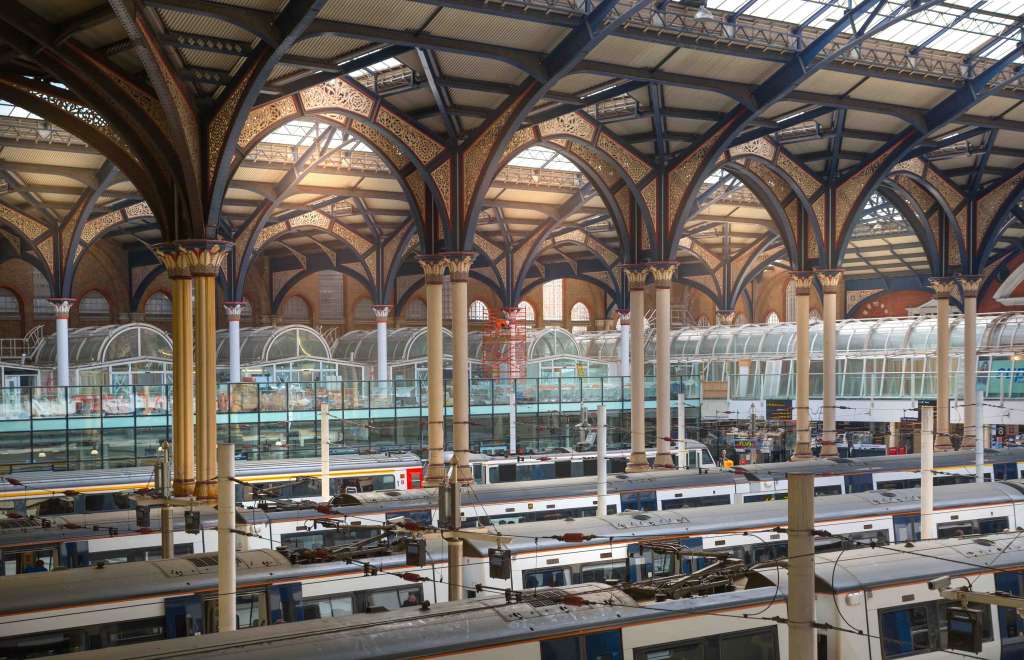See it, Save it! SAVE joins new coalition of heritage organisations to save Liverpool Street Station
3rd February 2023
SAVE Britain’s Heritage has joined an unprecedented coalition of heritage organisations uniting to protect Liverpool Street Station in London from crass and unsustainable redevelopment plans.
SAVE has submitted strong objections to the developer as part of their public consultation process ahead of a planning application which is expected to be submitted at the end of April.
The emerging proposals show Liverpool Street Station and its majestic neighbour, the grade II* listed Victorian hotel, stamped on by massively overscaled development. This would be in the form of two proposed office blocks of 10 and 15 storeys built on top of the station and hotel. The currently light-filled station concourse would be covered over and key views of St Paul’s Cathedral would be interrupted by the sheer bulk of the scheme.
The members of the coalition, known as LISSCA – the Liverpool Street Station Campaign – include SAVE Britain's Heritage, The Twentieth Century Society, Historic Buildings and Places, The Georgian Group, The Spitalfields Trust, Civic Voice, London Historians and The Victorian Society. The national body, Historic England, has also raised serious concerns about the proposals.
A formal planning application is expected at the end of April 2023.
Sign the petition now and send a message to Sellar and Network Rail that these damaging proposals must be scrapped.
Henrietta Billings, director of SAVE Britain’s Heritage, said: “We’ve joined this coalition because we passionately believe that building towers on top of and through listed buildings is a crass and unsustainable approach to developing our towns and cities. If Sellar’s proposal for Liverpool Street is acceptable, why not build office blocks on top of other protected public buildings – the Albert Hall, the Tower of London, the British Museum?”
Recent Listing
Joint developer behind the plans Sellar Property Group and MTR appear to be pressing on with their scheme. This is despite the recent enhanced heritage protection for Liverpool Street Station and its hotel announced by the government after a major reassessment by Historic England in December 2022. The upgraded listings now recognise the value of the station’s historic reconstruction in 1985-1992, with the former Great Eastern Hotel being upgraded from grade II to grade II*.
That decision followed urgent calls from SAVE, the Victorian Society and the Twentieth Century Society in autumn 2022 that the buildings needed greater protection in light of Sellar’s emerging plans.
History
Liverpool Street Station was originally built in 1873-75 for the Great Eastern Railway by chief engineer Edward Wilson. With a novel L-shaped layout and twin naves flanked by vaulted aisles, it is the City’s biggest rail terminus and one of London’s busiest.
Dubbed the Gateway to East Anglia by The Times in 1920, it has been used by generations of commuters as well as holidaymakers heading for the coast. It was also the point of arrival for refugees fleeing Nazi persecution via the port of Harwich. The station is particularly associated with the Kindertransport evacuations of approximately 10,000 unaccompanied Jewish children, a fact commemorated in a sculpture outside the station’s Liverpool Street entrance.
Spirit of the 1970s
In the 1970s, changing demands led to plans for the complete demolition and rebuilding of the station and its underused neighbour, Broad Street, with a “stridently modernist” design by architects Fitzroy Robinson.
The plans were defeated at a public inquiry by a coalition of groups including the Victorian Society and SAVE Britain’s Heritage, backed by Sir John Betjeman. BR took the major infrastructure project in-house and its chief architect Nick Derbyshire designed what Historic England called a “full-blooded historicist” concourse matching the original trainshed.
It proved highly influential, with Historic England describing it as a “singular example” and a “dramatic reflection of the shift in the way the redevelopment of Victorian buildings was approached in this period”.
ENDS



